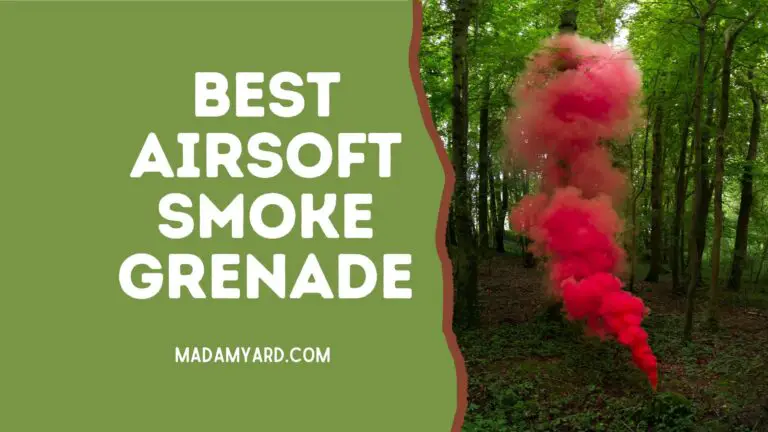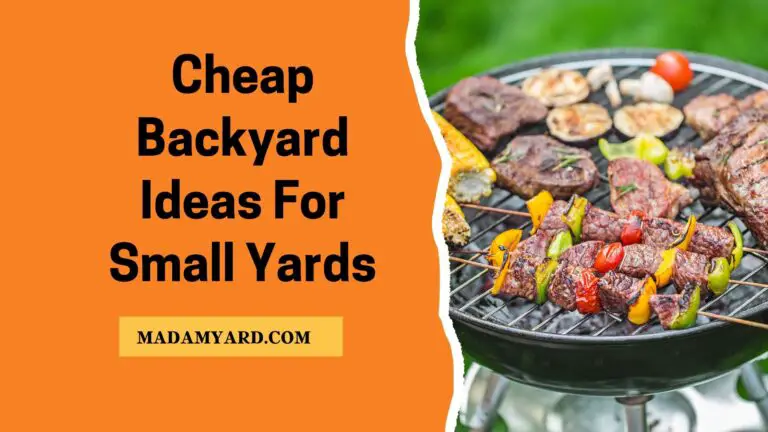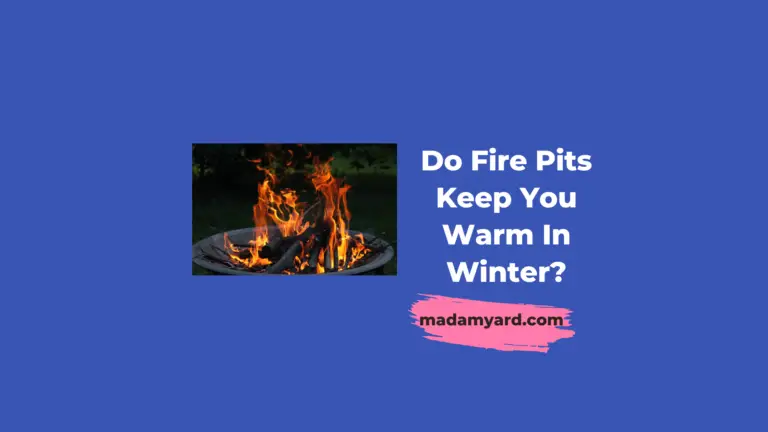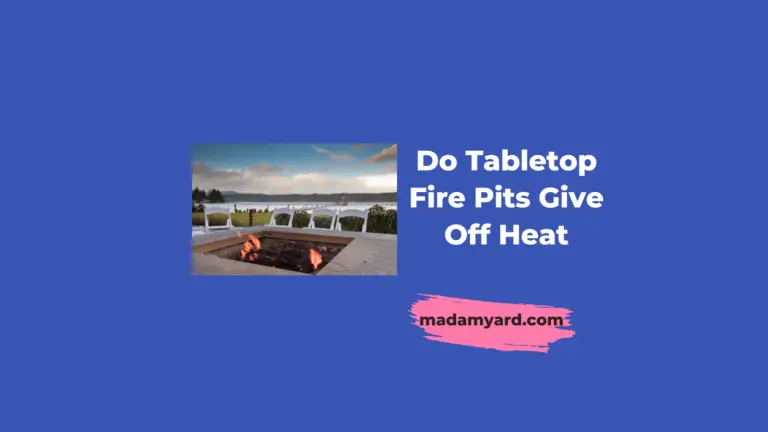Do Fire Pit Need Drainage?
Do fire pit need drainage? Although drainage is not the first thing that comes to mind when designing or installing a fire pit, it is essential to consider it.
Whether you have a portable fire pit or a permanent stone fire pit, you may need to add a drainage system requiring permanent fire pit drains. The fire pit will be easy to use, clean, and maintain due to the proper drainage system.
If your fire pit is on a flagstone surface, you may need to construct fire pit drainage beneath your seating area as well or risk having a water pool around your feet even if the fire pit is dry. As a result, there are a few considerations.
You may not need to cover a wood-burning stone fire pit or one made with fire bricks because there is no metal or anything to rust.
There is nothing there that water may harm, and nothing will happen if ash spreads across your lawn if it is in the center of your yard.
Does Your Fire Pit Need Drainage or Coverage?
Yes, during the rainy season or when it snows, your outdoor fire pit has to have a drainage system or be covered.
Let me tell you why it is essential to know your fire pit and provide drainage. If you do not secure your fire pit from water, the water will:-
Water must keep out of your metal or gas fire pit for it to function properly
How Do You Keep Water From Pooling in a Fire Pit?
While many portable metal fire pits with huge bowl designs include fire pit holes in the bottom, this supplies oxygen to the fire instead of for drainage.
To prevent water accumulation, most portable types may be covered with a tarp or custom-fitted cover while not in use, then tipped out if necessary.
Fixed stone fire pits are a different situation, and even if you cover them during the wetter or winter months, you may get caught out by a rain shower in the spring and summer.
Therefore, it is good to install some form of drainage solution in this respect.
To keep a sticky sludge of wet ash from accumulating in the bottom of your fire pit, there are a couple of basic techniques to keep it from flooding with precipitation. We shall go through them below.
We shall also discuss whether or not you should cover your fire pit and how to measure it for a water-resistant cover correctly.
How Do You Drain Water From A Fire Pit?
A fire pit can be drained in many ways. Standing water within a fire pit is a poor idea since it can cause a lot of damage over time, but most do not have a built-in remedy for this frequent problem.
Flipping an above-ground portable fire pit on its side will quickly drain all of the water.
6 alternatives for drying out fire pits are listed below:
1. Patience and Evaporation
A fire pit can be left uncovered, and the light and heat will cause the water to evaporate over time. However, this method is less effective in damp circumstances, and it may take a long period.
Mosquitoes deposit their eggs in still waters, and therefore leaving standing water, independent of the container, will attract them.
2. Pump It Out
You may physically suck the water out using a little handheld pump. Although this process is simple, it can take time.
3. Vacuum
One of the most helpful household devices that a homeowner may have on hand is a vacuum.
Water on floors, carpets, and even your fire pit can be cleaned up with these wet and dry vacuums. Furthermore, the suction draws air toward the fire pit drainage pipe, which will help dry the surface faster.
Furthermore, the surface will dry faster because the suction draws air toward the pipe.
4. Drainage Pipe
If you are putting up a tabletop or countertop fire pit, make sure to include a drainage pipe at the bottom of the bowl to drain any excess water.
When using propane or ethanol-fueled fire pit, this approach is most successful. The ash and charcoal from a wood-burning fire pit might block the pipe.
A corrugated metal drain cover with a heavy-duty design is much better. You may utilize the pour-water approach to put out your fire this way.
5. Drainage Holes
A drill may be used to create many tiny, properly spaced fire pits with drainage holes around the bottom of any fire pit.
Choose the correct bit and setting for your pit material, then mark four to eight points around the bowl’s lowest point where you wish to add drainage.
It is also a good idea to include a center hole. Then drill it from the inside to ensure that any material that pushes outward does not create a barrier that permits water to enter.
To make the drill holes flat with the surface, you may need to sand or remove any extra material that sticks out from them.
6. Dig A Channel
If your fire pit is on the floor, I propose creating a tiny channel allowing water to flow away from it.
Any rainfall that occurs in your fire pit will be able to flow away from where you construct flames if you take the time to accomplish this. Assemble the channel to slope downhill and away from the fire pit.
Adding a 2-3 inch diameter hole at or just below floor level and then erecting either a channel or a pipe to carry the water away is a similar procedure for above-ground permanent fire pits, such as those lined with bricks.
Helpful Tips To Know How Fire Pits Drain
Allowing your fire pit to be a fertile mosquito ground is not a good idea, and it is a bad idea to gather water in an open hole. Fortunately, a few simple remedies depend on the type of pit you use.
Here are some additional helpful hints for understanding how fire pits drain.
- People neglect to add drainage, not just around fire pits, and grills are used to collect water in your yard.
- If you create a fire pit in your backyard, make sure the bottom is lined with sand. This low-cost material assists in absorbing heat and evenly distributing it across the fire pit. Sand is also incredible for covering the actual metal bowl from the extreme heat that the fire can throw out.
- Instead of a concrete block wall or brick and mortar, try utilizing kiln-fired pavers around the sides if you are building over the floor. Pavers are not only safe to use, but they also give the best ventilation, and you can skew and position them so that water in the fire pit flows out rather than gathering in your pit.
Do You Need To Cover Your Fire Pit in The Winter?
Yes, the basic answer is yes. Leaving your fire pit out on the porch during the winter is OK, especially if you want to use your outdoor living area. Below are main three reasons why you should cover your fire pit in winter:
Keep Pests And Rodents Out Of The Shelter
There are a lot of small, vacant places in fire pits and fire pit tables. For bugs attempting to make it through the winter, these cages can give just the right amount of warmth and shelter.
A fire pit cover that cinches securely around the base will keep them away. Even in the dead of winter, a warm spell may rekindle wasp activity, so make sure your gas supply does not provide an accessible, appealing refuge.
Do Not Let Moisture Build-Up And Corrode The Equipment
If you use sheets as improvised patio furniture coverings, you may find that your furniture has rotted and corroded when you expose it in the spring.
On the other hand, many cover materials are designed to let air flow in and out without leaving holes for bugs to crawl.
So search for breathable, water-resistant coverings that keep the rain off the internal gas mechanics and don’t trap dampness under the service.
Protect It From Snow And Sleet
A mound of snow is one of the quickest ways for winter to damage your outdoor furniture. It may saturate your furnishings for months if the moisture is buried behind the snow.
While corrosion-resistant paint or powder coatings commonly cover fire pits, humidity can still get into the gaps.
Sleet is considered dangerous since strong falling ice may pierce that protective layer. Cover your fire pit with a reinforced cover as well, so it absorbs the impact.
How Do You Measure A Fire Pit For A Cover?
You may cover your fire pit with a basic tarp or a custom fire pit cover, whether it’s a portable smokeless fire pit type or a fixed stonewalled one.
The good thing is that pre-made PVC-coated polyester coverings are reasonably priced. It is also available in many sizes to fit a wide range of fire pit types.
Measure the dimensions of your fire pit from its broadest outside edge to determine the size of a new cover. To be safe, add at least 4 inches to this diameter measurement to ensure that your cover fits.
For example, if your fire pit’s diameter from the farthest outer edge is 42 inches, you’ll need a cover that’s at least 46 inches wide.
Firepit covers are long-lasting and weatherproof, and they’re inexpensive at Amazon or your local hardware shop.
It’s definitely worth the extra expense to extend the life of your fire pit. Furthermore, you can avoid having to clean it out when you don’t have to.
Final Words
Traditional fire pits lack drainage, so any liquid spilled onto the ground must evaporate or soak into the soil underneath. Recent models seldom contain a basic drainage system, forcing you to dump or pump them manually.
Installing drainage to your fire pit is a good idea if you want to keep it outside and uncovered. However, if your fire pit is material from any metal, including stainless steel, you need fully cover it to prevent water collecting.
More than moisture, which may corrode metal, is kept out by a sturdy cover. Debris in the pipes of propane and ethanol fire pits can jam them.
When the pit is not in use, I suggest getting drainage in case of unintentional flooding. And a high-quality cover to keep anything out of the fire pit.







